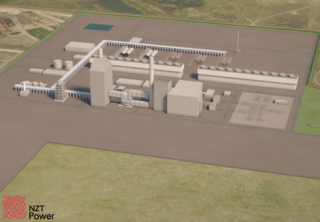-
Net Zero Teesside Power in the UK achieves FID, aiming to be the first CCGT with carbon capture
Date posted:
-
-
-
Post Author
Greg Kelsall
-
-
![]()
Net Zero Teesside Power (NZT Power) has announced financial close and entry into the execution phase of what aims to be the world’s first gas-fired power station with carbon capture and storage. NZT Power, a joint venture between bp (75%) and Equinor (25%), expects to commence construction from mid-2025, with start-up expected in 2028.
NZT Power will progress in parallel with the Northern Endurance Partnership (NEP), which also announced financial close and entry into the execution phase. This will provide the CO2 transportation and storage infrastructure to serve three initial carbon capture projects on Teesside as part of the East Coast Cluster. Bp and Equinor each have a 45% stake in NEP with the remaining 10% share held by IFRF member, TotalEnergies. Background on both NZT and NEP has been provided in previous articles by the IFRF.
Building work on the two projects will be completed by nine leading engineering, procurement and construction contractors across eight contract packages with a combined value of around £4bn.
- Onshore Power, Capture and Compression – Technip Energies and GE Vernova consortium including Balfour Beatty as the construction partner and Shell as the technology licensor
- Onshore CO2 gathering system and gas connection – Costain
- Linepipe – Onshore and Offshore – Marubeni-Itochu Tubulars Europe Plc with Liberty Steel Hartlepool, Corinth Pipeworks and Equans as the nominated pipe-mills
- Offshore Pipeline, Landfalls, Onshore Outlet Facilities and Water Outfall – by IFRF member Saipem
- Offshore Subsea Injection System – TechnipFMC
- Power and Communications Cable – Alcatel Submarine Networks
- Offshore Systems Engineering – Genesis
- Integrated Project Management Team – Wood
Once operational, the plant could produce up to 742 MW of flexible, dispatchable low-carbon power to supplement the increasing renewable power supply from wind and solar in the UK.
The integrated facility will consist of an H-class combined cycle gas turbine (CCGT) with amine-based post-combustion capture designed for rapid start-up, whilst capturing around 95% of emissions.
Up to 2 MtCO2/y captured at the plant will be dried and compressed, to be transported to secure subsea storage sites beneath the North Sea using the infrastructure provided by NEP. This includes a CO2 gathering network and onshore compression facilities as well as a 145 km offshore pipeline and subsea injection and monitoring facilities for the Endurance saline aquifer located around 1000m below the seabed.
Up to 4 MtCO2/y will be transported from the three Teesside projects initially, rising to an average of up to 23 MtCO2/y by 2035 with future expansion of the East Coast Cluster.
Low-carbon power will be exported to the nearby National Grid Tod Point facility, supported by a Dispatchable Power Agreement. This is a contractual framework based on the Contracts for Difference (CfD) standard terms and conditions but adapted to enable natural gas fired power with carbon capture and storage to play a mid-merit role in meeting electricity demand, displacing unabated thermal generation plants.
As the CCSA reports, this represents a significant milestone for the CCUS industry in the UK. By deploying this vital technology, heavy industries will be able to decarbonise their operations, while low-carbon dispatchable power is generated for when the wind is not blowing and the sun is not shining.

